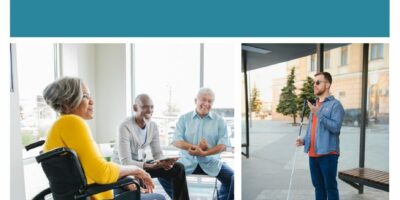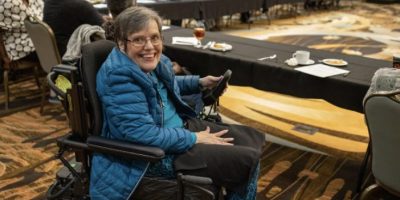Key Principles for Advancing Transit Equity for People with Disabilities and Older Adults
Date Published: May 20, 2022Written by DeBrittany Mitchell
**Reflections from presentation by Professor Tierra Bills, Wayne State University
The Transportation Equity Act for the 21st Century is the largest government investment to date authorizing over $200 billion for transportation development since 1998. Yet as of 2021, 45% of Americans still had no access to transit.[i] While there has been progress and nationwide investment in transit infrastructure, justice for underserved populations such as people with disabilities and older adults continues to be a challenge. The question becomes: how do we remove barriers, enhance access, and ultimately advance equity for “transportation disadvantaged”[ii] populations? Let’s explore three key principles for advancing transit equity and how they apply to people with disabilities and older adults.[iii]
Understand the impact of pre-existing conditions on transportation disadvantaged communities
Research has shown a correlation between lack of transportation services and detrimental impacts on social determinants of health, including economic stability, education, healthcare, neighborhood, and social outcomes.[iv] This puts those with “pre-existing conditions” such as people with disabilities and older adults, most at risk of experiencing disparities and inequities that impact their overall quality of life. In this instance, it is important to have working knowledge of the pre-existing conditions that affect circumstances and travel outcomes of communities you intend to serve. For example, nationally 41.8 million people over age 18 have disabilities, 40 million people in this population are over 65 years old, and 32 million live below the poverty level.[1] For many, these circumstances are compounded by little or no transportation options to meet their basic needs. What do those pre-existing conditions look like for people with disabilities and older adults in your community?
Improve community-based data strategies
How do we engage communities to get an accurate indication of what equity looks like to them? Using community-based data strategies such as community roundtables, public forums and events, and surveys are great mechanisms to get qualitative data and information about real-life experiences of individuals within the communities. Coupled with quantitative data, these methods help provide context and contribute to the larger story of the work that needs to be done to advance transit equity within each community.
Including the voices of people with disabilities and older adults especially requires community engagement strategies that are fully inclusive, as cities can be composed of many geographic areas with various levels of inclusion and opportunity. Engage community members early and often to be more informed about the places they live, play, and work, and about appropriate methods for data gathering. Increasing equity requires inclusive data stewardship and engagement by:
- Talking to the community and beta testing survey instruments. For example, are you asking the right questions on surveys?
- Seeking out community advocates. Who is most influential and involved in the community you intend to serve?
- Establishing trust and tailoring outreach. Where can you best reach those you intend to serve?
- Reflecting on what data is telling us about travel preferences. Is the data you collect helping you understand their travel preferences beyond current conditions?
Integrate equity into all aspects of your work
“Equity is a process, not a project.”[v] The goal is to integrate equity into all aspects of our transit programs, processes, and outcomes. Challenge yourself to think differently about how equity may need to be redefined in different contexts. For example, to begin work on equitable transit options for rural areas, consider:
- How do we define transit equity for people with disabilities and older adults in rural settings?
- What does the process look like in smaller communities?
- How do you plan to account for affordability?
- What places are people trying to visit that they cannot reach?
- How many people with disabilities and older adults in rural communities have access to personal cars?
- What is the poverty line?





